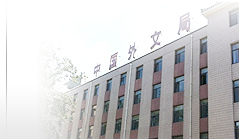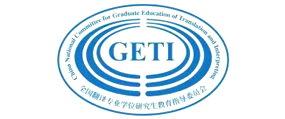目录
译论研究 口译认知过程中“deverbalization”的认知诠释 许明 5
基于语用推理机制的翻译过程框架 陈科芳12
文学翻译批评中对译与作的“质”和“构”的认知 王贵明17
译史纵横
《论语》英译与西方汉学的当代发展 王琰24
书刊评介
《翻译理论探讨》—对当代西方翻译理论的批判性认识 王鹏33
翻译教学
计算机辅助翻译硕士专业教学探讨 俞敬松 王华树38
“专注听力”—口译听力培训方法之我见 徐然43
法律翻译教学刍议 张法连 叶盛楠48
译技探讨
两会记者招待会温家宝总理所引诗词的翻译探讨 过家鼎52
翻译即反译 欧阳昱53
浅析图片说明的英译 韩清月 邢彬彬58
英译汉话题句取向翻译模式研究 徐莉娜63
航海日志的语言特点及其英译 隋桂岚70
学术争鸣
“赔偿”还是“免责”?—商榷Indemnity之中文表达 蒋开召 杨74
再谈《红楼梦》中古器物的汉英翻译问题 左耀琨77
译家译事
泰山北斗一代通儒—缅怀德国功能派翻译理论创始人汉斯·费梅尔教授
自学之友
英译汉:Speech at the Graveside of Karl Marx ( Frederick Engels) 曹明伦 译84
翻译导读:洗垢求瑕 追求善译 曹明伦86
汉译英:济南的冬天(老舍) 施晓菁 译89
翻译导读:Comments on Translating Winter in Ji,nan 施晓菁90
新人新作
习作原文:检点我们的幸福感(刘文宁) 王昌玲 译91
点评:保存与“再创造” 朱柏桐92
参考译文:Revive Our Sense of Happiness 朱柏桐 译93
词语选译
房地产业词语选译 94
英文摘要 95
信息广角
《中国翻译》杂志敬告投稿者、本刊稿约( 32)
本刊邮购信息( 62)其它(76)
2010年暑期全国高等院校翻译专业师资培训二号通知(封二)
首届全国口译大赛一号公报(封底)
中文摘要
口译认知过程中“deverbalization”的认知诠释许明 北京语言大学
摘要:迄今为止,国内外译界还未对“deverbalization”,即“脱离源语语言外壳”,这个口译过程中“显而易见”的翻译阶段做出科学解释。本文在追溯“deverbalization”的理论根源、归纳总结国内外译界对此问题的研究现状基础之上,剖析了“deverbalization”所面对的实质性问题,并结合认知心理学中语言理解和认知语义学中“认知常量”的相关理论,模式化了同声传译和交替传译理解过程中的语义表征模式。在此基础之上,本文从认知心理学的视角进一步阐明了“deverbalization”过程中“意义”的存在形式、界定了该过程与口译理解的界限、规范了该过程的认知特征和发生机制,最后点明了对“deverbalization”进行认知诠释的意义。
关键词:口译认知;deverbalization;同声传译;交替传译;话语理解;认知语义
中图分类号:H059 文献标识码:A 文章编号:1000-873X(2010)03-0005-07
基于语用推理机制的翻译过程框架
陈科芳 *浙江师范大学
摘 要: 本文在分析整合语用学原理优势的基础上,提出基于关联理论的语用推理机制,并应用这个语用推理机制描述翻译现象,尤其是文化负载词语的翻译现象,最后提出 一个多元的描述性翻译过程框架。这个框架能比较客观地解释翻译过程,回答译者主体地位的确定性、读者分析法的必要性、多元译本存在的合理性等问题。
关键词:关联理论;最佳关联;语用推理机制;翻译过程
中图分类号:H059 文献标识码:A 文章编号:1000-873X(2010)03-0012-05
文学翻译批评中对译与作的“质”和“构”的认知
王贵明 北京理工大学
摘 要: 文学翻译批评应当避免用单一理论就译作表象的建构去测度译者和译作,批评者应该在了解译者的诗学和美学倾向以及相关文学时代特征等因素的前提下去评议翻译 成果。中肯的译评,是评者在切实了解译者对许多与原作相关因素进行异中求同和同中显异的复杂智慧活动的基础上,感知译者的诗性思维和情感动态,从文学性、 历史性和现实性多重角度审视译作,而不会先入为主、固执己见地一味批评。本文提出“译与作同构与异构和同质与异质”命题,以素来争议颇多的庞德翻译为例,通过倡导论者与译者比肩思维,希冀对译作与原作思想情感和语言文化内在特质与形式结构进行多向度的比较,从中求解译作的是与非。
关键词:文学批评;译与作;质与构
中图分类号:H059 文献标识码:A 文章编号:1000-873X(2010)03-0017-07
《论语》英译与西方汉学的当代发展*
王琰 解放军国际关系学院
摘 要:受当代西方汉学研究趋势的影响,当代《论语》英译主要出现在90年 代之后,其翻译方法和特点也与之前的译本有一定的区别,大致可归为两种诠释定向:面向理论和现实的定向与面向文本和历史的定向。当代《论语》英译具有鲜明 的创新性,其多元化的形态不仅丰富了汉学本身,还促成了汉学学科与其他相关学科的交叉,增加了汉学研究对于西方的现代意义,促进了西方汉学与中国学界的对 话和交流。
关键词:《论语》;英译;西方汉学;诠释定向
中图分类号:H059 文献标识码:A 文章编号:1000-873X(2010)03-0024-09
计算机辅助翻译硕士专业教学探讨
俞敬松 王华树 北京大学
摘 要:进入21世纪以来,语言服务发生了翻天覆地的变化,新的时代呼唤新一代的语言服务人才。本论文主要阐述了对于新世纪语言服务的理解和思考,翻译技术相关课程的设计定位以及教学计划的制定,教学实践过程中面临的各种问题及解决思路,最后介绍了学生实习就业情况,并展望了CAT专业未来的发展。
关键词:语言服务;计算机辅助翻译;CAT;翻译技术;本地化
中图分类号:H059 文献标识码:A 文章编号:1000-873X(2010)03-0038-05
“专注听力”——口译听力培训方法之我见
徐然 *外交学院
摘 要:“听”是口译过程的重要环节,却也是口译学员的薄弱环节。本文提出口译员应具备的“专注听力”,即“边听边分析、边听边记忆”的特殊技巧。笔者认为该技巧应作为本科翻译专业“口译听力课”训练的重点。本文将语篇分析理论和方法运用到口译听力课的“专注听力”训练中,进一步探讨了“专注听力”训练的过程和实际操作。
关键词:专注听力;口译听力课;话语分析;培训方法
中图分类号:H059 文献标识码:A 文章编号:1000-873X(2010)03-0043-05
法律翻译教学刍议*
张法连 叶盛楠 中国政法大学
摘要:法律翻译教学不同于传统翻译教学,法律翻译自身的特点和规律决定了法律翻译教学的特殊性。本文通过对目前国内法律翻译教学中存在的问题进行分析,指出了法律翻译教学改革创新方向,明确教学目标,丰富教学内容和方法,加强师资建设,科学建立学科评价机制。
关键词:法律;翻译; 教学法
中图分类号:H059 文献标识码:A 文章编号:1000-873X(2010)03-0048-04
浅析图片说明的英译
韩清月 外文出版社 邢彬彬 北大方正
摘 要:图片是文章的重要组成部分,图片说明能起到明确图片含义、提升图片功效的作用。本文结合实例,分析总结了图片说明翻译的特点,并针对文字的取舍、重点的把握和翻译技巧等提出了相关建议。
关键词:图片说明;“画外之音”
中图分类号:H059 文献标识码:A 文章编号:1000-873X(2010)03-0058-05
英译汉话题句取向翻译模式研究
徐莉娜 青岛大学
摘 要:本文探讨了英汉语的类型差异,分析了汉语话题—说明句的基本结构特征,提出主谓句转换为话题—说明句的5种模式。本模式研究建立在英汉语对比基础上,旨在探索英语主谓句转换的便捷路径,为译者提供克服翻译腔、提高译文表达效果的方法。
关键词:话题—说明句;主谓句;结构调整
中图分类号:H059 文献标识码:A 文章编号:1000-873X(2010)03-0063-07
航海日志的语言特点及其英译
隋桂岚 *大连海事大学
摘 要: 随着我国航运事业的发展,进入国际航运领域的中国船只越来越多,每年服务于国外船东的海员更是数以万计,航海日志的翻译问题,尤其是英译问题日显突出。本文对英文航海日志的语言特点及翻译方法进行分析和总结,以期对提高航海日志的英译质量有所裨益。
关键词: 航海日志;语言特点;英译
中图分类号:H059 文献标识码:A 文章编号:1000-873X(2010)03-0070-04
CONTENTS
Deverbalization in Conference and Simultaneous Interpretation: A Cognitive View Xu Ming 5Pragmatic Inferential Mechanisms Undergirding the Translational Process Chen Kefang 12
Some Principles in the Criticism of Literary Translation Wang Guiming 17
Recent Renditions of The Analects and Their Impacts on Contemporary Development of Sinology in the West Wang Yan 24
A Master Program in Computer Aided Translation Yu Jingsong & Wang Huashu 38
Fostering "Attentive Listening Skills? Strategies for Improving Listening Comprehension among Undergraduate Trainee Interpreters Xu Ran 43
Guidelines for Translating Captions Han Qingyue & Xing Binbin 58
The Topic-Prominence of Chinese Sentences and Its Implications for E-C Translation Xu Lina 63
E/C Translation Practice: Speech at the Graveside of Karl Marx (Frederick Engels) Cao Minglun 84
C/E Translation Practice: Winter in Ji,nan(Lao She) Lynette Shi 89
Abstracts of Major Papers in This Issue 95
English Abstracts of Major Papers in This Issue
Deverbalization in Conference and Simultaneous Interpretation: A Cognitive Viewby Xu Ming (Beijing Language and Culture University, Beijing, China) p.5
Abstract: Though a key concept in the “théorie interprétative de l,interprétation,” deverbalization has not yet been elaborated precisely by translation scholars. In an effort to shed much-needed light on this often misunderstood term, the present paper subjects deverbalization to a close examination, tracing its conceptual development back to the original sources and reviewing available literature on the issues it has generated. Drawing from what the theories of cognitive psychology and cognitive semantics have to offer in this respect, the author proposes two models for conceptualizing the way semantic organization takes shape in the comprehension processes of simultaneous and consecutive interpretation. An account of how meaning is represented during the deverbalizing process is also given.
Key words: cognitive process; interpretation; simultaneous interpretation; consecutive interpretation; deverbalization; discourse comprehension; cognitive semantics
Pragmatic Inferential Mechanisms Undergirding the Translational Process
by Chen Kefang (Zhejiang Normal University, Jinhua, China) p. 12
Abstract: Synthesizing resources offered by different pragmatic theories, this article proposes a relevance-based model of pragmatic inference and applies it to a reexamination of how culture-loaded words and expressions have been translated. The study leads to the construction of a poly-systemic framework for better describing the translational process. Within such a framework, it is possible to attack with fresh vigor such recalcitrant issues as to what extent translators should enjoy a subjective status, whether an analysis of the target audience is called for in preparation for translation, or whether having multiple target-language versions of the same source text is justified.
Key words: relevance theory; pragmatic inference; translational process; optimal relevance
Some Principles in the Criticism of Literary Translation
by Wang Guiming (Beijing Institute of Technology, Beijing, China) p. 17
Abstract: Criticism of literary translation should avoid basing itself on consideration of surface textual elements only. Rather, the critic should take into account not just the translator,s affective state and poetic conception, but also the historico-cultural milieu in which she functions. An adequate understanding of how and why the target text coincides with and differs from the source text in all applicable terms is a sine quo non for conducting the criticism. Besides showing a sensitivity to the cultural context, the critic must also strive to empathize with the translator. For an illustration of what counts as good criticism in this area, the often contentious evaluations of Ezra Pound,s translation are reviewed as a case in point.
Key words: literary translation; criticism; target text; source text; internal factor; external factor
Recent Renditions of The Analects and Their Impacts on Contemporary Development of Sinology in the West
by Wang Yan(PLA University of International Studies,Nanjing, China) p. 24
Abstract: Numerous new translations of The Analects have appeared since the 1990s, and in both methodological and stylistic terms, these recent renditions differ markedly from the earlier ones. Demonstrating either a theoretical-practical bent or a textual-historical orientation in their interpretation of the source text, and striking for their stylistic diversity and methodological innovativeness, these new translations of the Confucian classic have been enriching contemporary sinological studies in the West, adding to its current socio-cultural relevancy, intensifying its interactions with neighboring disciplines, and facilitating its dialogue with the Chinese academe as well.
Key words: The Analects; translation; sinology; West; interpretive orientation
A Master Program in Computer Aided Translation
by Yu Jingsong & Wang Huashu (Peking University, Beijing, China) p. 38
Abstract: Language services have undergone radical changes since the beginning of this century. In order to meet the demands the new era had placed on translation, the Language Information Engineering Department in Peking University,s School of Software and Microelectronics started in 2007 to offer a Master program in computer aided translation (CAT) , which is the first of its kind in Chinese mainland. In this paper, we offer an account of the curricular design of our program following some reflections on the current development of language services. In addition to identifying the problems and difficulties we have encountered in running our CAT courses, we also discuss the CAT students,chance for internship and employment and speculate on the prospects of CAT Master program in general.
Key words: language services; computer-aided translation; CAT; translation technology
Fostering “Attentive Listening Skills”: Strategies for Improving Listening Comprehension among Undergraduate Trainee Interpreters
by Xu Ran(China Foreign Affairs University, Beijing, China) p.43
Abstract: Listening comprehension is the first and foremost step in the interpreting process, yet for undergraduate C-E trainee interpreters, taking the step is as vital as it is difficult. This paper calls for the fostering of “attentive listening skills”, which enable interpreters to analyze and memorize while listening. Arguing that developing such skills should be the focus of listening training for all undergraduate programs in interpretation, the author elaborates on applicable theoretical insights and practical strategies for this endeavor.
Key words: attentive listening skills; undergraduate programs in interpretation; discourse analysis; training strategy
Guidelines for Translating Captions
by Han Qingyue (Foreign Langusges Press, Beijing, China) & Xing Binbin
(Beijing Founder Electronics, Beijing, China) p. 58
Abstract: As a key component of any text with accompanying photos, captions play an important role in clarifying the text,s meaning and enhancing its rhetorical effects. When rendering captions, the translator should pay special attention to their wording and especially to the special perspective such wording introduces on the text as a whole.
Key words: caption; off-screen implication
The Topic-Prominence of Chinese Sentences and Its Implications for E-C Translation
by Xu Lina (Qingdao University, Qingdao, China) p. 63
Abstract: This paper compares the typological differences between English and Chinese, calling attention to the fact that these two languages are dominated syntactically by the subject-predicate and the topic-comment structure respectively. Identifying key structural characteristics of a typical Chinese sentence, the author proposes five approaches for turning a subject-prominent English sentence into a topic-prominent one in Chinese. These methods offer a more convenient way for handling structural adaptation in E-C translation, making it easier to avoid the pitfall of translationese and enabling the Chinese version to sound more idiomatic to its target readers.
Key words: topic-prominent sentence; subject-prominent sentence; structural adaptation

















